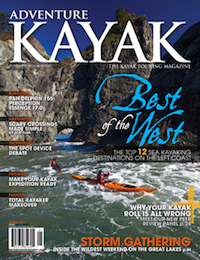The once-cheery white paint on Michipicoten Island lighthouse’s flying buttresses is peeling. The doors and ceilings of the 80-year-old lightkeeper’s house sag.
Michipicoten Island’s compact cluster of eroding buildings isn’t alone. Late last May, the federal government of Canada quietly declared the still-active beacon “surplus” along with nearly 1,000 of its maritime brethren across the country.
The announcement came packaged with the new Heritage Lighthouse Protection Act—legislation “to conserve and protect heritage lighthouses” that elected officials, the Heritage Canada Foundation (HCF) and various other groups across Canada worked for over a decade to enact.
“This move undermines the intent of the Act, leaving the door open to the lighthouses’ abandonment and demolition by neglect,” says HCF spokesperson Carolyn Quinn.
The Act establishes a process to select and designate federally owned lighthouses for heritage status, requiring their maintenance by the Department of Fisheries and Oceans (DFO). However, it excludes surplus ones— which, not incidentally, now constitute 96 percent of all major light stations—from being designated. Unless, that is, community groups or private individuals commit to buy them and take responsibility for their upkeep.
Surplus lighthouses will be on the auction block for two years—until May 29, 2012. Interested parties must apply to Parks Canada for heritage designation and present a business plan to prove they can manage such a site. Ac- tual navigation aids would remain the property of, and continue to be maintained by, the Coast Guard. Preference is being shown to non-private buyers—community conservation groups, not-for-profits and municipalities—for whom the price is just $1.
“We’re trying to do good things,” says DFO Senior Divestiture Analyst Andrew Anderson.“We’re very sensitive to the fact that these [lights] are of enormous value for heritage purposes.” Anderson continues that the sale of lights isn’t new, “We’ve been doing this for 10 or 15 years.”
Only now the clock is ticking. After the divestiture period, those lights that remain unsold will face an uncertain future.
My Canada includes lighthouses
“It’s difficult to speculate what would happen to unsold surplus lighthouses,” says DFO spokesperson Nelson Kalil.
Kalil says that maintaining the 480 still-active—and 490 inactive—surplus lighthouses is beyond the budget and mandate of the Coast Guard. He emphasizes it is the lights, not the structures themselves, which are essential. “They can be replaced with simpler structures whose operation and maintenance would be more cost-effective.”
Many see this as government double-speak for an obvious outcome: Remote havens that have served mariners for two and a half centuries will disappear and be replaced by steel skeleton towers.
Former B.C. lighthouse keeper Jim Abram is among those who predict the replacement beacons will be “inferior” and of little use to mariners seeking shelter in storms.
If the DFO had hoped to pass the buck to another federal department, it doesn’t seem to be working. Parks Canada has been offered some of the lighthouses, including those within national parks like Pukaskwa Park’s Otter Island and Newfoundland’s iconic Cape Spear, but this “hasn’t fit into that department’s strategy” says Kalil.
For kayakers and other coastal recreationists, equally disquieting as the loss of safety and heritage is the thought of “No Trespassing” signs plastered on these sometimes-rare patches of public land. On some parts of the coast, the familiar red and white enclaves are the only guarantee of an unmolested campsite.
In a passionate letter to the Kingston Whig Standard, a Simcoe Island, Ontario, resident summed up Canadians’ sense of loss, and raised the call for action:
“If this is fiscal responsibility, it is, frankly, fiscal responsibility Canadians can ill afford. My Canada includes lighthouses. Does yours?”




